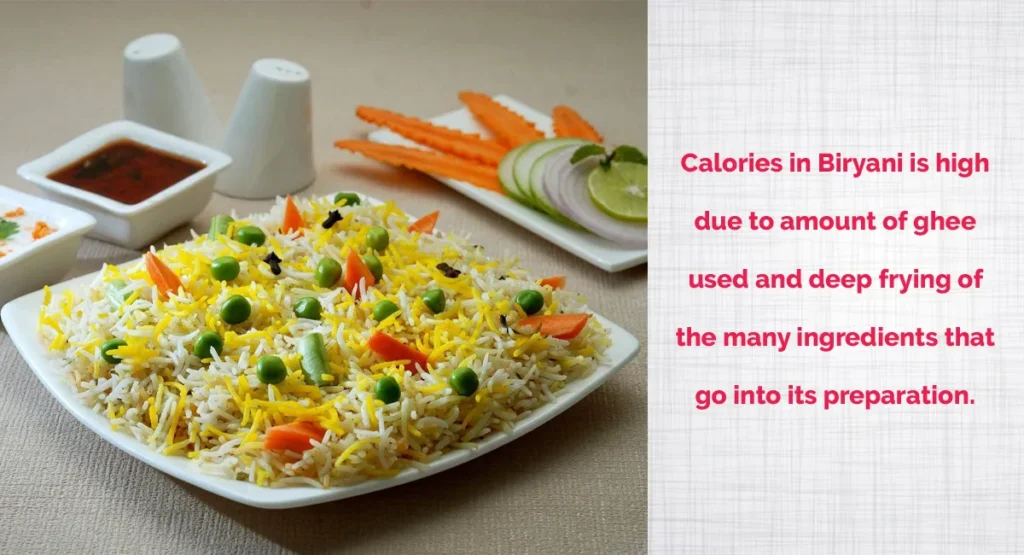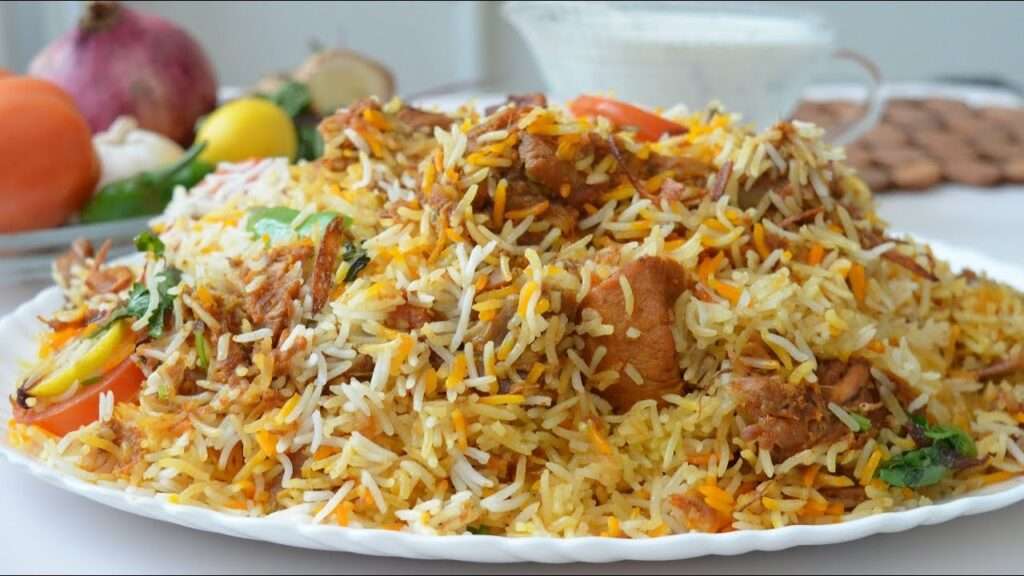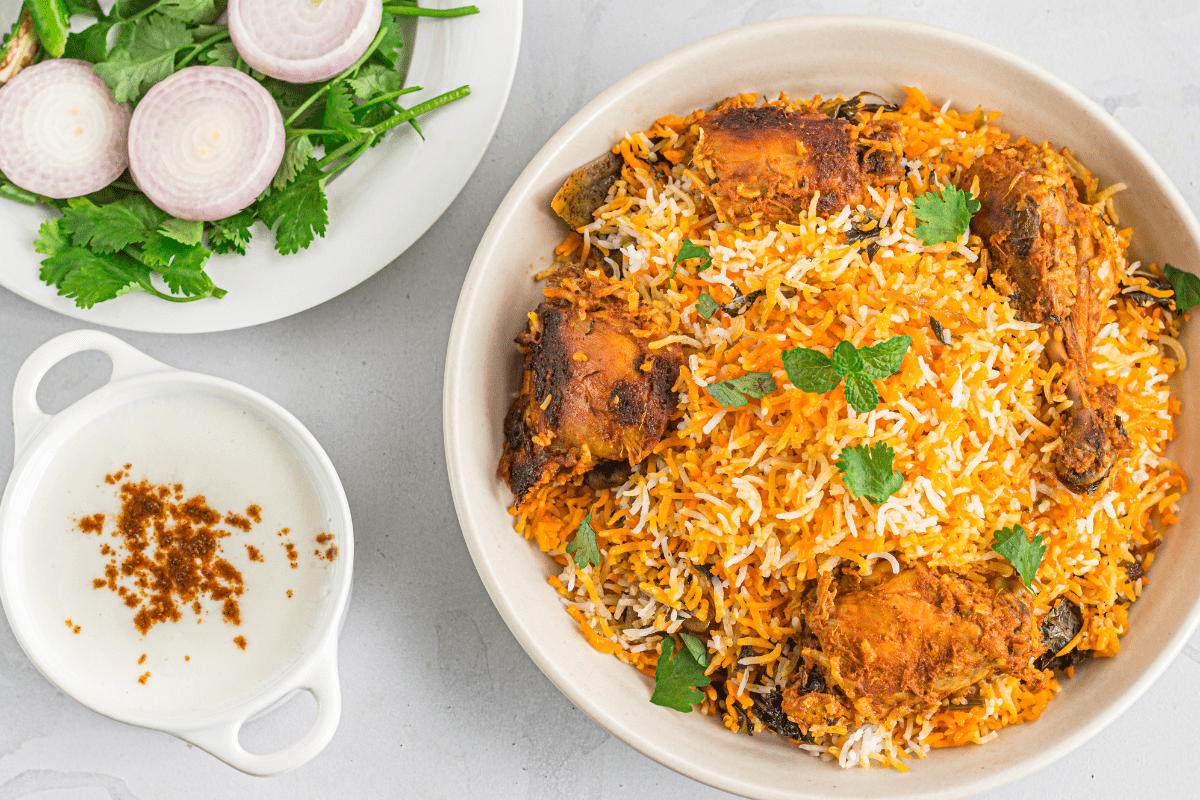How many calories in one plate of biryani ? Biryani is a popular and delicious dish that originated in the Indian subcontinent. It has gained widespread popularity around the world and can now be found on the menus of many restaurants. However, with its rich and flavorful ingredients, many people wonder just how many calories are in one plate of biryani. Whether you are watching your weight or simply curious about the nutritional value of this dish, in this blog post, we will explore just how many calories are in one plate of biryani and what factors can affect the calorie count. So, let’s dig in and find out the truth about this beloved dish.

What is Biryani and Its Origins
Biryani is a popular and aromatic dish that has its origins in the Indian subcontinent. It is a flavorful rice dish that is typically made with fragrant long-grain Basmati rice, meat (such as chicken, mutton, or fish), and a variety of spices and herbs. Biryani is believed to have been introduced to the Indian subcontinent by the Mughals, who ruled India in the 16th century. It is said to have evolved from the Persian rice dish called “pilaf,” with the addition of Indian spices and flavors. Over time, biryani has become a staple in Indian cuisine and has gained immense popularity worldwide. Its unique blend of flavors and textures makes it a truly delightful and satisfying dish.
Ingredients and Preparation of Biryani
Biryani is a complex dish that requires a variety of ingredients and careful preparation. The key components of biryani include fragrant long-grain Basmati rice, meat (such as chicken, mutton, or fish), and a blend of aromatic spices and herbs. Additional ingredients may include onions, tomatoes, yogurt, and ghee (clarified butter). The preparation process involves marinating the meat, parboiling the rice, and layering the ingredients in a pot. The pot is then sealed and cooked on low heat, allowing the flavors to meld together. The result is a mouthwatering dish that is full of depth and complexity.

Nutritional Breakdown of Biryani
Biryani is not only a delicious dish but also a nutrient-packed one. Let’s take a closer look at the nutritional breakdown of biryani. It is a great source of carbohydrates, thanks to the basmati rice, providing energy to keep you going. The meat adds a good amount of protein, essential for muscle repair and growth. The variety of spices and herbs not only enhance the flavor but also offer various health benefits, such as anti-inflammatory properties. While biryani can be calorie-dense due to the addition of ghee and meat, it is also rich in vitamins, minerals, and antioxidants. So, enjoy your plate of biryani, knowing that it offers both taste and nutrition.
How Many Calories are there in One Plate of Biryani?
If you’re wondering just how many calories are in one plate of biryani, you’re not alone. Biryani is a rich and flavorful dish, so it’s natural to be curious about its calorie content. The exact number of calories can vary depending on the ingredients and portion size, but on average, one plate of biryani can contain around 600-800 calories. Keep in mind that this is just an estimate, and the calorie count can be higher or lower depending on the specific recipe. So, if you’re watching your calorie intake, it’s best to enjoy biryani in moderation or opt for healthier variations.

Factors Affecting the Calorie Count in Biryani
The calorie count in biryani can be affected by several factors. First and foremost, the type and quantity of meat used can significantly impact the calorie content. Chicken and fish tend to be leaner options compared to mutton, which can have higher fat content. Additionally, the amount of oil or ghee used in the cooking process can contribute to the overall calorie count. Other ingredients such as yogurt and ghee also add to the richness of biryani and therefore, its calorie content. Lastly, the portion size plays a crucial role in determining the calorie count, as larger portions will naturally contain more calories. So, when enjoying biryani, be mindful of these factors and make adjustments according to your dietary goals.
Healthier Biryani Variations and Alternatives
Looking to enjoy the flavors of biryani while keeping it healthier? There are several options you can explore. One alternative is to substitute the meat with vegetables or legumes, such as chickpeas or tofu, to add plant-based protein and reduce the calorie content. Another option is to use brown rice instead of white rice, as it contains more fiber and nutrients. Additionally, you can experiment with reducing the amount of oil or ghee used in the cooking process to lower the overall calorie count. By making these small tweaks, you can still savor the deliciousness of biryani while making it a more nutritious choice.

